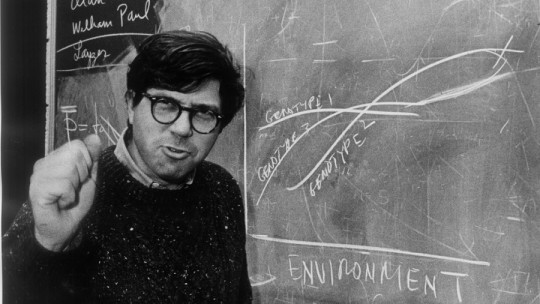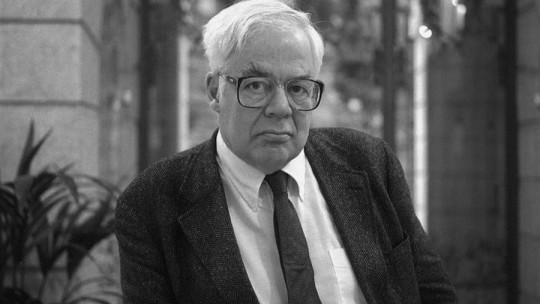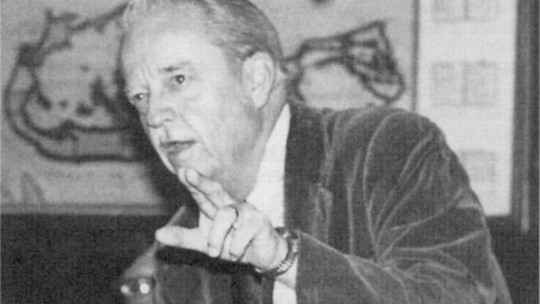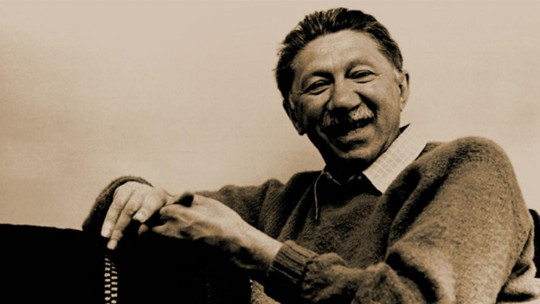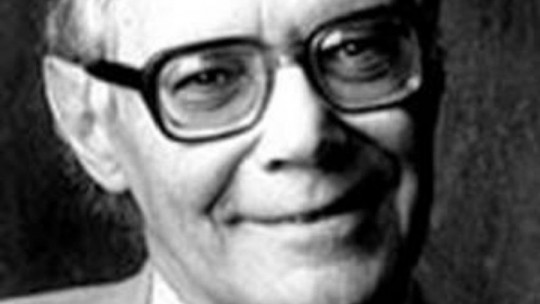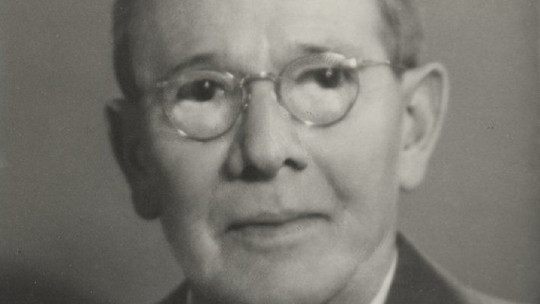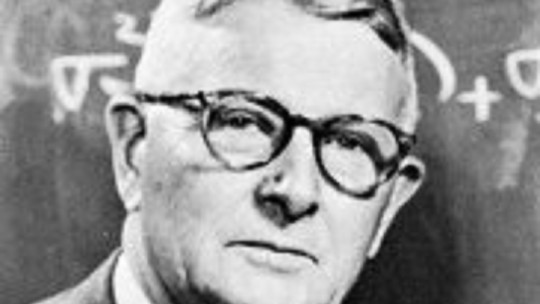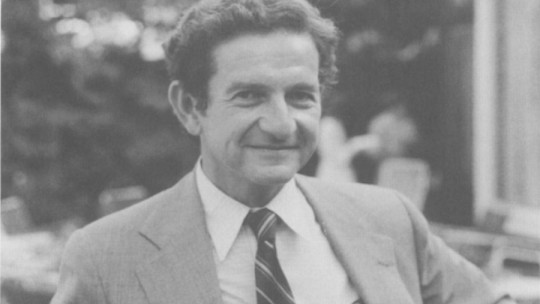
Herrnstein is one of the great authors who stood out in the field of psychology during the second half of the 20th century in the United States.
Below we can learn more about the life of this author through a summary biography of Richard Herrnstein highlighting those works or publications that were especially relevant to the promotion of his career and that today continue to have a certain impact in the field of study to which they correspond.
Brief biography of Richard Herrnstein
Richard Herrnstein was born in New York City, United States, in 1930 His family, who were of Jewish origin, had emigrated to America from Hungary. His parents were Rezso Herrnstein and Flora Irene Friedman. It was a humble family, whose income came from Rezso’s work painting houses.
His training took place in public institutions, such as the High School of Music and Art, and the City College of New York, where Richard Herrnstein would complete his studies as a psychologist. Thanks to his promising profile, he managed to access the doctoral program at Harvard University.
This is how, in 1955, At just 25 years old, Herrnstein became a doctor, after having published a doctoral thesis on conditioning processes Specifically, this work was named “Behavioral consequences of the elimination of a discriminative stimulus associated with variable interval reinforcement.”
This thesis was done under the direction of none other than Burrhus Frederic Skinner, father of the psychological school of behaviorism. In fact, both authors maintained a magnificent relationship, with Skinner being Herrnstein’s mentor, whom he took as his favorite pupil.
In addition to advising him on his doctorate, they also collaborated on research carried out with pigeons, in a laboratory that Richard Herrnstein himself was in charge of managing after Skinner, and would do so throughout his career. In addition to training academically, he served for three years in the US Army.
Career at Harvard
Richard Herrnstein spent his entire career at Harvard University itself, where he had been able to learn from an eminence like BF Skinner and obtain a doctorate under his tutelage. As a result, Herrnstein began to build a reputation that would soon be endorsed with the work and research that he would develop.
One of these contributions to psychology was the so-called law of pairing What this law states is that an animal, faced with two possible choices, will choose the one that provides a greater reward, with a frequency directly proportional to the amount of said reward.
According to this reasoning, a pigeon (an animal that Skinner and Herrnstein usually used for their experiments) that is faced with the situation of choosing between a container with a certain amount of food, and another that contains twice as much as the previous one, has twice as much food. probability of choosing the second option compared to the first.
But it was not Richard Herrnstein’s only contribution. Another of his great discoveries was the theory of improvement, which he developed together with the author William Vaughan Jr This theory represents a continuation of the research begun with the law of pairing. In this sense, the theory of improvement proposes that animals will try harder the greater the improvement in their situation that they can achieve.
Therefore, it introduces a new variable, since now the animal not only has to decide between two reward possibilities, a greater one and a lesser one, but it must also take into account the effort that each of them requires, and finally He will choose the one whose work brings him the maximum benefit.
These processes are carried out automatically, without reasoning involved, since we are talking about reactions carried out by animals and not by human beings, so it is not a rational question.
Continuation of his career and final years
With many years working as an experimental psychologist at Harvard, Richard Herrnstein was already a recognized figure in his field. In 1965, another of his great publications arrived, the volume titled “Consultation book on the history of psychology” which he wrote in collaboration with his colleague, Edwin Boring.
In addition to his work as a researcher at Harvard, where he also headed the psychology department between ’67 and ’71, Herrnstein also fulfilled other tasks. He was in charge of editing the psychology magazine titled “Psychological Bulletin.” In addition, he was elected a member of the American Academy of Arts and Sciences.
Regarding his personal life, Richard Herrnstein had two marriages. The first of them was with Barbara Brodo, with whom he married in 1951 and had a decade-long relationship, thanks to which his daughter Julia was born. After divorcing, in 1961 he married Susan Chalk Gouinlock, who would be the mother of the children Max and James.
The last years of this researcher’s life were marked by lung cancer, from which he ended up dying in 1994, when he was only 64 years old. Very shortly before his death, he had published his last book, titled “The Bell Curve”, which would become his most controversial work We will see its implications in detail below.
The bell curve
Richard Herrnstein wrote “The Bell Curve” in collaboration with Charles Murray, in line with the research he carried out during the last stage of his career, in which he studied the factors that affected human intelligence. It is precisely the theme that the authors explored in said book.
One of the first statements that Herrnstein makes in the volume is that intelligence depends on both genetic factors and environmental factors, which is an accepted truth in all circles of psychology, although some authors put more weight on some than on others. others, which has generated an intense debate that has been going on for decades.
Richard Herrnstein also states that socioeconomic status is the best predictor of a person’s success in all aspects. That is, the higher the socioeconomic level of a family, the more likely their children will be to have a better salary, to be a good worker, or even more likely to not commit crimes.
At the beginning of the book, its authors establish a total of six points, which will be the bases for the rest of the contents of the work. The first of them is that there are differences in the cognitive abilities of human beings and therefore not all of them would be the same based on said variable
The second is that there are psychometric tests to measure an individual’s IQ and, unlike academic exams, which can generate more doubts or be more subjective, these tests achieve their objective with great success, so The IQ of different people can be evaluated and compared with each other.
The third point that Richard Herrnstein mentions is that the result of that IQ test would be what would generally be understood as intelligence. Next, the author talks about stability in this level of intelligence throughout people’s lives, so that an IQ test carried out in different periods on the same individual should not differ too much in its results.
The fifth statement is that All of these tests are designed to avoid any bias that may appear against any race, ethnic or social group, so all people would be on equal terms when subjected to the IQ test in question. Finally, Richard Herrnstein states that the heredity factor in intelligence would be between 40% and 80%.
After these postulates, the authors continue to develop their work and tell us about the concept of a cognitive elite, which would be a sector of the United States with more intelligence and also a higher socioeconomic level that was progressively separating itself more and more from the rest of the individuals, delving into these differences and making them increasingly palpable.
Of course, all these concepts and ideas were not without controversy, since Richard Herrnstein was putting on the table the idea that there could be groups of people who, in a genetic way, had a greater or lesser predisposition to be more intelligent than the rest
This work has been followed by many others, some trying to demonstrate the falsehood of the conclusions he reached and others supporting his ideas.

